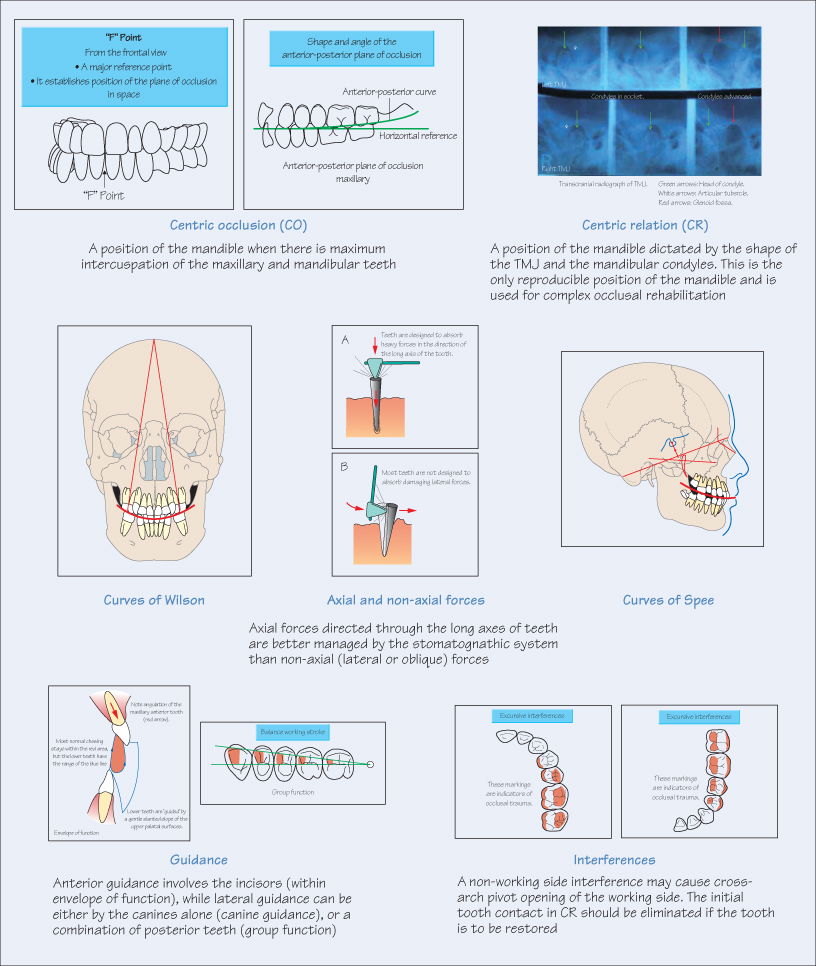14
Occlusion: Terminology and Definitions

There are few topics in dentistry that are more shrouded in mystery than the subject of occlusion. The major reason is that our knowledge and understanding of occlusion is incomplete. There has been much speculation and various theories have been put forward, but opinion remains fragmented. However, there are basic principles that are undisputed, and this chapter covers these points, offering a practical approach for prosthodontic treatment.
Curves of Spee, Wilson and Monson
Viewed from the lateral aspect, i.e. the sagittal plane, the curve of Spee is defined as an anteroposterior curve touching the incisal edges and cusps of the dentition and passing through the mandibular condyle. The curve of Spee was originally proposed with a radius of 2.5 inches. A similar curve exits in the bucco-lingual plane, termed the curve of Wilson. The curve of Monson is a 3-D representation of the curves of Spee and Wilson, depicted by a sphere with a radius of 4 inches contacting all incisal edges and cusps of the mandibular and maxillary teeth. The significance of these curves is that, in an unworn dentition, the anteroposterior and bucco-lingual curvature allows unimpeded mandibular lateral and protrusive excursions. However, disruption of these curves due to tooth wear, migration or tooth loss causes occlusal disharmonies, which require addressing to re-establish these curves.
Centric Occlusion
Centric occlusion (CO) is apparent when antagonist teeth are in a position of maximum intercuspation position (MIP). CO is influenced by tooth shape as well as neuromuscular ‘memory’. In CO, the occlusal forces are in an ideal vertical direction, directed through the long axis of the teeth and subsequently dissipated by the periodontal ligament and alveolar bone. In the majority of circumstances, most restorations are tailored to ‘fit’ this occlusal status quo.
Centric Relation
Centric relation (CR) is when the mandibular condyles are maximally seated in />
Stay updated, free dental videos. Join our Telegram channel

VIDEdental - Online dental courses


